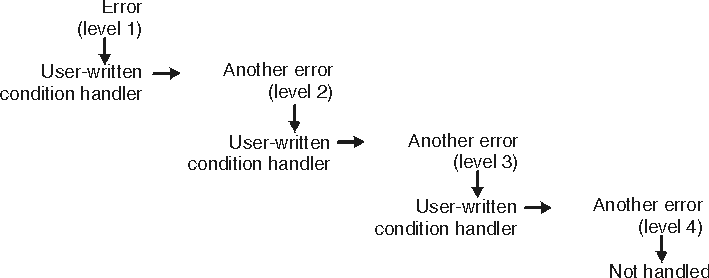DEPTHCONDLMT
Derivation: DEPTH of nested CONDition LiMiT

The default value for non-CICS applications is DEPTHCONDLMT(10).
The default value for CICS® applications is DEPTHCONDLMT(10).
Syntax >>-DEPthcondlmt--(--+-------+--)------------------------------->< '-limit-'
- limit
- An integer of 0 or greater value. It is the depth of condition
handling allowed. An unlimited depth of condition handling is allowed
if you specify 0.
A limit value of 1 specifies handling of the initial condition, but does not allow handling of nested conditions that occur while handling a condition. With a limit value of 5, for example, the initial condition and four nested conditions are processed. In this case, there can be no further nesting of conditions.
If the number of nested conditions exceeds the limit, the application ends with abend 4087.
z/OS® UNIX considerations
The DEPTHCONDLMT option sets the limit for how many nested synchronous conditions are allowed for a thread. Asynchronous signals do not affect DEPTHCONDLMT.
Usage notes
- PL/I consideration: DEPTHCONDLMT(0) provides PL/I compatibility.
- PL/I MTF consideration: In a PL/I MTF application, DEPTHCONDLMT sets the limit for how many nested synchronous conditions are allowed for a PL/I task. If the number of nested conditions exceeds the limit, the application ends abnormally.
For more information
For more information about nested conditions, see z/OS Language Environment Programming Guide.